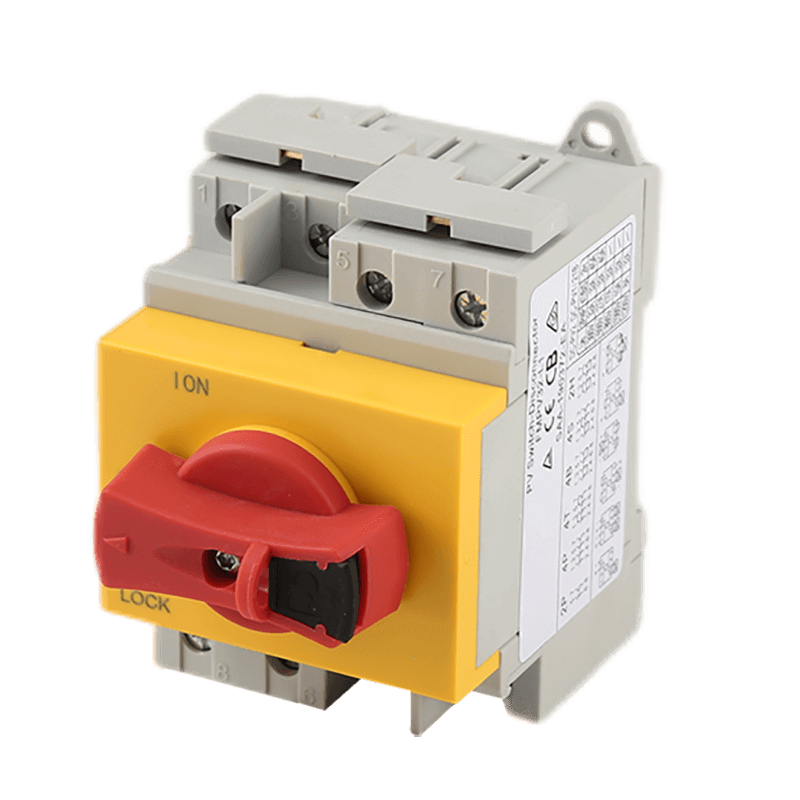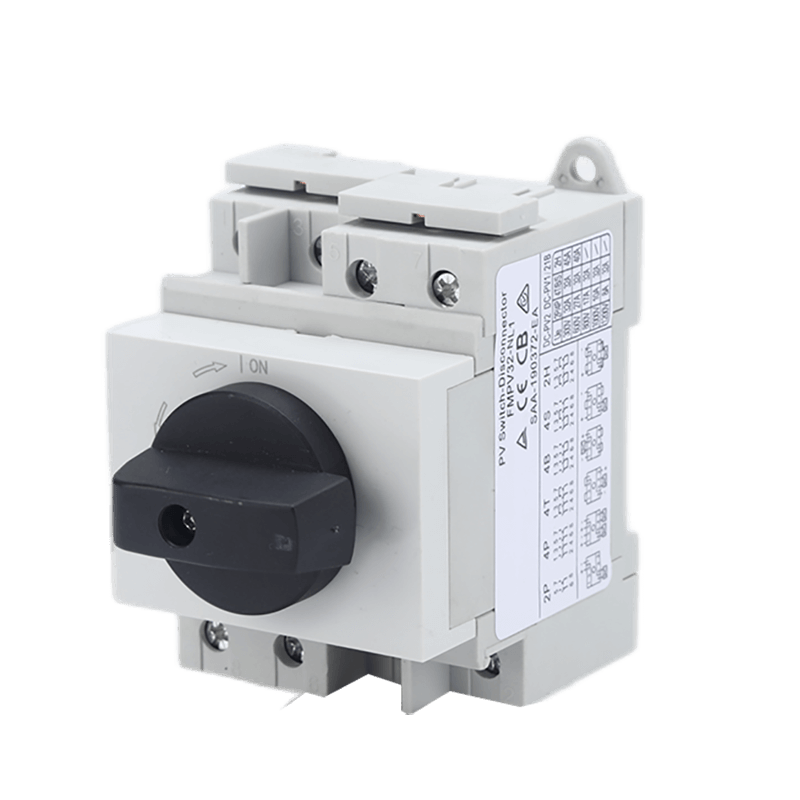Choosing the right DC MCB for your solar system involves matching the MCB's voltage and current ratings with your system's requirements. Opt for an MCB that supports at least the maximum system voltage (e.g., 48V) and current (e.g., 50 amps). Ensure it also meets safety standards like IEC or UL for reliability.
Introduction
Why DC MCBs are Critical
It's a protector of your solar system, much like Batman! It stops an electrical overload, a short circuit or will fry costly electronics and even result in fire. For example: If your system allows 100 Amps and suddenly there is an overload of 150A or any surge due to short then a properly chosen circuit breaker will come in the play, cut off supply and save complete setup from getting burnt.
Common Types of DC MCBs
It is primarily two DC MCBs that you will come across in your solar application - single-pole and double pole. Single-pole MCBs are for smaller, simpler systems and lower cost where double-pole offers more safety by disconnecting both live & neutral wires but is also useful in case you have a grid-connected system on which insulation check needs to be done.
Specifications to Look For
- System Voltage: Most solar systems work on 12V,24 or 48 MCB the voltage, this is important to check and choose right mcb based on your system voltage.
- Rating: Must be same or higher than max expected circuit current. If you expect a maximum current of 50 amps for example, take an MCB rated at least that.
- Breaking Capacity: This is the maximum fault current which MCB can safe interrupt with out damage. A high value means better protection.

Understanding DC MCBs
What's a DC MCB Anyway
An MCB (Miniature Circuit Breaker) on the DC side is basically a switch that turns off once too much electricity passes through it. Why is this important? Without an MCB, current would keep increasing and could cause the wiring of your solar system to overheat which will ruin equipment or it might even spark a wildfire.
You Need to Know These Different Types of DC MCB
You are going to encounter two most important types of MCBs in the wild, Single-pole and Double Pole. Single-pole MCBs are great for simple systems and very cost effective, handling just a single circuit. Contrarily, double-pole MCBs switch two circuits at once and cut off both line formations to make a circuit-safe. Great for more intricate or greater wattage systems.
Specs That Matter
- Voltage Rating: You happen to be working with a 24V system? Don't purchase an MCB having a 12V rating, as it can not bear the voltage. Always make sure the MCB is compatible with your system voltage, or it may backfire on you.
- Current Rating: Select MCBs rated for the highest current in your system (e.g. if max current of 40 amps, select MCBS with currents at least high as this). Kind of like making sure your umbrella big enough to keep you dry.
- Breaking Capacity: This is the maximum current that your MCB can safely interrupt. A general purpose MCB could have a breaking capacity of 10,000 amps — sufficient to avoid most surges in domestic installations.
Factors to Consider When Choosing a DC MCB
Match the Voltage and Current
The MCB that you have selected should be rated for the voltage and current of your system first of all. Got a 48V system? An MCB should be for as a minimum 48V, and if you have solar panels that are capable of outputting up to ~60 amps – your mcb should allow more than 60amps.
Consider the System Type
How is your setup? For simple and small-scale systems, a single-pole MCB might be enough. Easy and economical. If you need something stronger or with a higher consumption, it should be two-pole MCB. They provide that last little bit of security by breaking absolutely every connection, including positive circuits as well. This is essential in larger starting and charging systems or vehicle installations using a stainless steel case instead of the negative terminal post to interrupt ground potential wages he communications savvy mechanic would use to avoid getting shocks himself at disassemble time Need Some Help.

Installation Tips for DC MCBs
Choose the Right Location
As a first step, it is best advices to place your MCB near the battery bank. This decreases the probability for an electrical fault to be developed before it lands on breaker. Proper placement reduces 90% of potential electrical issues that will sneak through unprotected.
Wiring It Up
The finer details of wiring makes all the difference. Make use of cables whose size is appropriate for the amount you are going to load on your system. Usually runs off the peak output of your solar panels. For example, if your panels can draw 50 ams max, you would need cables capable of at least that. The same is like the cable that are too thin, they can deal with a small power but no more than using it to suck up milkshake in a cup.
Ensure Polarity is Correct
Correct Polarity on DC Circuits Check Positive & Negative connection with the MCB terminal (Positive and negative wire) This is the side which can result in big problems from swapping components between, and that might even void warranties.
Test Before You Energize
Hook everything up, don't just switch it on and hope for the best. Above all, a multimeter must be used to check the circuit and assure that all connections are well seated. This is something you should check before going live and save yourself some troubleshooting firepower.
